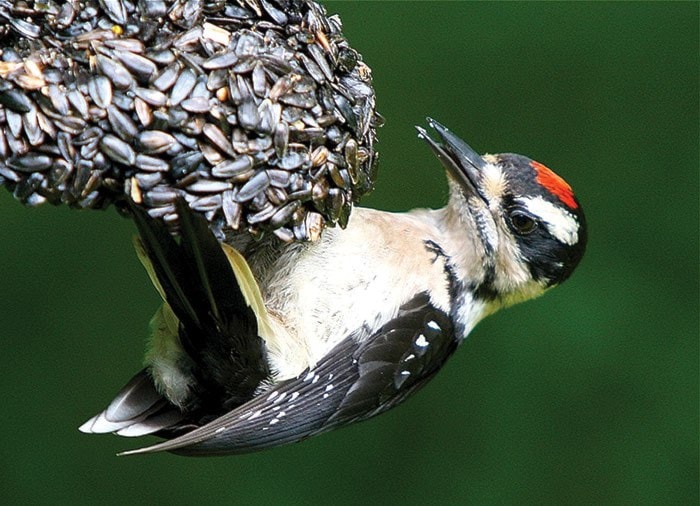A woodpecker at your tree should be cause for joy, even when it’s chiseling a nest hole in your favourite arbour.
But which is which? Pileated woodpeckers are so large, there’s no mistaking them, and flickers’ dotted breast feathers clearly indicate their type.
However, with almost identical plumage, the hairy and downy species take a bit more finesse to distinguish.
Simply put, think: ‘diminutive downy’ or DD and ‘huge hairy’ or HH. The hairy has a bigger body (24 cm, 9.5 in), longer bill, and prefers to nest in living trees. The more abundant downy is much smaller (17 cm, 6.5 in), with shorter bill, and chooses rotting, dead wood.
Female hairys feature black-and-white heads, while adult males and most juveniles have a red mark above the nape. Curiously, many woodpecker babies more closely resemble their fathers than their mothers.
Woodpecker behaviour’s a real treat.
On one walk along Simms Creek, I noticed sawdust falling on my head! I stopped and looked up to behold a male hairy chipping into a tree, and yanking sizeable grubs out. Periodically, he flew to a nearby tree and put the grub into his mate’s beak, whereupon she flew away, surely to feed their brood in a nest hole out of view – a relay feeding system!
Woodpeckers have one thought in mind as they drill and tap and pound our trees: “Where’s the beef?” For them, the best birdfeeder is suet. Voila! Beef dinner. Or hang out sunflower bells.
Every woodpecker species will become passionately interested in your backyard.
Email Christine at: wildernesswest@shaw.ca
